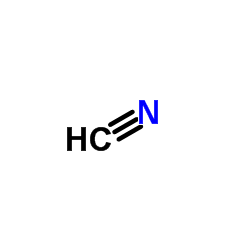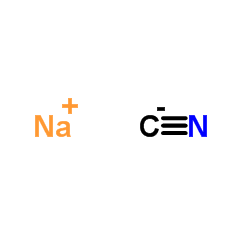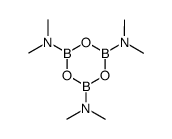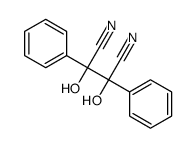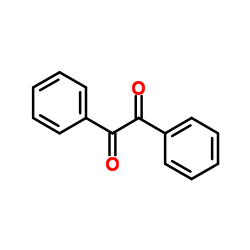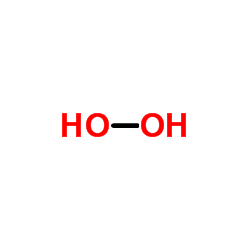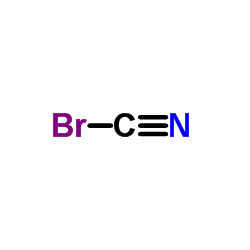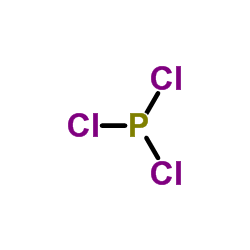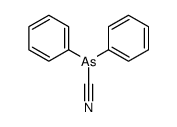592-04-1
| 中文名 | 氰化汞 |
|---|---|
| 英文名 | mercury dicyanide |
| 英文别名 |
Cianurina
Mercurius cyanatus Mercury dicyanide dicyanomercury MERCURIC CYANIDE Cyanure de mercure Hydrargyrum cyanatum Mercury cyanide EINECS 209-741-6 MFCD00011037 |
| 密度 | 4.00 g/cm3 (20 ºC) |
|---|---|
| 熔点 | 320 ºC (decomp) |
| 分子式 | C2HgN2 |
| 分子量 | 252.62500 |
| 精确质量 | 253.97700 |
| PSA | 47.58000 |
| LogP | 0.03106 |
| 外观性状 | Fine Crystalline Powde |
| 折射率 | 1.645 |
| 储存条件 | 储存注意事项 储存于阴凉、通风良好的专用库房内,实行“双人收发、双人保管”制度。远离火种、热源。避免光照。包装密封。应与氧化剂、酸类、食用化学品分开存放,切忌混储。储区应备有合适的材料收容泄漏物。 |
| 稳定性 | 1.稳定性 稳定 2.禁配物 强氧化剂、酸类 3.避免接触的条件 潮湿空气、光照 4.聚合危害 不聚合 |
| 水溶解性 | g/100g solution H2O: 6.31 (0°C) |
| 分子结构 | 1、摩尔折射率:无可用的 2、摩尔体积(cm3/mol):无可用的 3、等张比容(90.2K):无可用的 4、表面张力(dyne/cm):无可用的 5、介电常数:无可用的 6、极化率(10-24cm3):无可用的 7、单一同位素质量:253.976748 Da 8、标称质量:254 Da 9、平均质量:252.6248 Da |
| 计算化学 | 1.疏水参数计算参考值(XlogP):无 2.氢键供体数量:0 3.氢键受体数量:2 4.可旋转化学键数量:0 5.互变异构体数量:无 6.拓扑分子极性表面积47.6 7.重原子数量:5 8.表面电荷:0 9.复杂度:85.3 10.同位素原子数量:0 11.确定原子立构中心数量:0 12.不确定原子立构中心数量:0 13.确定化学键立构中心数量:0 14.不确定化学键立构中心数量:0 15.共价键单元数量:1 |
| 更多 | 1.性状:无色或白色结晶粉末,见光颜色变暗。 2.熔点(℃):320(分解) 3.沸点(℃):分解 4.相对密度(水=1):4.00 5.辛醇/水分配系数:-2.31 6.溶解性:易溶于水、氨水、甲醇、乙醇,不溶于苯。 |
Synonym: Mercuric cyanide. SECTION 2 - COMPOSITION, INFORMATION ON INGREDIENTS
Risk Phrases: 26/27/28 33 SECTION 3 - HAZARDS IDENTIFICATION EMERGENCY OVERVIEW Very toxic by inhalation, in contact with skin and if swallowed. Danger of cumulative effects.Hygroscopic (absorbs moisture from the air).Light sensitive. Potential Health Effects Eye: Exposure to mercury or mercury compounds can cause discoloration on the front surface of the lens, which does not interfere with vision. Causes eye irritation and possible burns. Skin: Causes skin irritation and possible burns.
Ingestion: May be fatal if swallowed. Causes gastrointestinal irritation with nausea, vomiting and diarrhea. Metabolism may release cyanide, which may result in headache, dizziness, weakness, collapse, unconsciousness and possible death. Inorganic mercury compounds may cause central and peripheral nervous system effects. Inhalation: Causes respiratory tract irritation with possible burns. Acute exposure to high concentrations of mercury vapors may cause severe respiratory tract irritation. Chronic: Chronic ingestion may cause accumulation of mercury in body tissues. Chronic exposure to mercury compounds may produce immunologic glomerular disease. Chronic exposure to cyanide solutions may lead to the development of a "cyanide" rash, characterized by itching, and by macular, papular, and vesicular eruptions, and may be accompanied by secondary infections. SECTION 4 - FIRST AID MEASURES Eyes: Immediately flush eyes with plenty of water for at least 15 minutes, occasionally lifting the upper and lower eyelids. Get medical aid immediately. Skin: Get medical aid immediately. Immediately flush skin with plenty of water for at least 15 minutes while removing contaminated clothing and shoes. Wash clothing before reuse. Ingestion: If victim is conscious and alert, give 2-4 cupfuls of milk or water. Never give anything by mouth to an unconscious person. Get medical aid immediately. Inhalation: Get medical aid immediately. Remove from exposure and move to fresh air immediately. If not breathing, give artificial respiration. If breathing is difficult, give oxygen. Notes to Physician: SECTION 5 - FIRE FIGHTING MEASURES General Information: As in any fire, wear a self-contained breathing apparatus in pressure-demand, MSHA/NIOSH (approved or equivalent), and full protective gear. During a fire, irritating and highly toxic gases may be generated by thermal decomposition or combustion. Extinguishing Media: Use agent most appropriate to extinguish fire. Use water spray, dry chemical, carbon dioxide, or appropriate foam. SECTION 6 - ACCIDENTAL RELEASE MEASURES General Information: Use proper personal protective equipment as indicated in Section 8. Spills/Leaks: Clean up spills immediately, observing precautions in the Protective Equipment section. Sweep up or absorb material, then place into a suitable clean, dry, closed container for disposal. Avoid generating dusty conditions. Provide ventilation. SECTION 7 - HANDLING and STORAGE Handling: Wash thoroughly after handling. Use only in a well-ventilated area. Avoid contact with eyes, skin, and clothing. Avoid ingestion and inhalation. Store protected from light. Avoid mechanical shock and friction. Storage: Store in a cool, dry, well-ventilated area away from incompatible substances. Poison room locked. Keep containers tightly closed. Store protected from light. SECTION 8 - EXPOSURE CONTROLS, PERSONAL PROTECTION Engineering Controls: Use adequate general or local exhaust ventilation to keep airborne concentrations below the permissible exposure limits. Exposure Limits CAS# 592-04-1: United States OSHA: 5 mg/m3 TWA (listed under Cyanide anion).0.1 mg/m3 Ceiling (listed under Mercury, aryl and inorganic compound Belgium - TWA: (listed as mercury inorganic compounds): 0.025 mg/ VLE (as Hg) France - VME: (listed as mercury inorganic compounds): 0.1 mg/m3 (as Hg) Germany: (listed as mercury inorganic compounds): 0.1 mg/m3 VME ( Hg) Germany: (listed as mercury inorganic compounds): Skin absorber Malaysia: (listed as mercury, aryl and inorganic compounds): 0.1 mg/m3 TWA (as Hg) Netherlands: (listed as mercury inorganic compounds): 0.15 mg/m3 Netherlands: (listed as mercury inorganic compounds): 0.05 mg/m3 Russia: (listed as mercury inorganic compounds): 0.2 mg/m3 TWA (a Hg) Russia: (listed as mercury inorganic compounds): 0.05 mg/m3 STEL Hg) Spain: (listed as mercury inorganic compounds): 0.025 mg/m3 VLA-E (as Hg) Personal Protective Equipment Eyes: Wear appropriate protective eyeglasses or chemical safety goggles as described by OSHA's eye and face protection regulations in 29 CFR 1910.133 or European Standard EN166. Skin: Wear appropriate protective gloves to prevent skin exposure. Clothing: Wear appropriate protective clothing to prevent skin exposure. Respirators: Follow the OSHA respirator regulations found in 29 CFR 1910.134 or European Standard EN 149. Use a NIOSH/MSHA or European Standard EN 149 approved respirator if exposure limits are exceeded or if irritation or other symptoms are experienced. SECTION 9 - PHYSICAL AND CHEMICAL PROPERTIES Physical State: Crystals Color: white Odor: odorless pH: Not available. Vapor Pressure: Not available. Viscosity: Not available. Boiling Point: Not available. Freezing/Melting Point: Not available. Autoignition Temperature: Not available. Flash Point: 320 deg C ( 608.00 deg F) Explosion Limits, lower: Not available. Explosion Limits, upper: Not available. Decomposition Temperature: 320 deg C Solubility in water: Soluble. Specific Gravity/Density: 3.996 Molecular Formula: C2HgN2 Molecular Weight: 252.63 SECTION 10 - STABILITY AND REACTIVITY Chemical Stability: Stable under normal temperatures and pressures. Friction and impact sensitive explosive. Conditions to Avoid: Incompatible materials, light, friction. Incompatibilities with Other Materials: Strong oxidizing agents, acids. Hazardous Decomposition Products: Hydrogen cyanide, nitrogen oxides, carbon monoxide, carbon dioxide, mercury/mercury oxides. Hazardous Polymerization: Has not been reported. SECTION 11 - TOXICOLOGICAL INFORMATION RTECS#: CAS# 592-04-1: OW1515000 LD50/LC50: CAS# 592-04-1: Oral, mouse: LD50 = 33 mg/kg; Oral, rat: LD50 = 26 mg/kg. Carcinogenicity: Mercury(II) cyanide - Not listed by ACGIH, IARC, or NTP. Other: See actual entry in RTECS for complete information. SECTION 12 - ECOLOGICAL INFORMATION SECTION 13 - DISPOSAL CONSIDERATIONS Dispose of in a manner consistent with federal, state, and local regulations. SECTION 14 - TRANSPORT INFORMATION IATA Shipping Name: MERCURY CYANIDE Hazard Class: 6.1 UN Number: 1636 Packing Group: II IMO Shipping Name: MERCURY CYANIDE Hazard Class: 6.1 UN Number: 1636 Packing Group: II RID/ADR Shipping Name: MERCURIC CYANIDE Hazard Class: 6.1 UN Number: 1636 Packing group: II USA RQ: CAS# 592-04-1: 1 lb final RQ; 0.454 kg final RQ SECTION 15 - REGULATORY INFORMATION European/International Regulations European Labeling in Accordance with EC Directives Hazard Symbols: T+ Risk Phrases: R 26/27/28 Very toxic by inhalation, in contact with skin and if swallowed. R 33 Danger of cumulative effects. Safety Phrases: S 13 Keep away from food, drink and animal feeding stuffs. S 28A After contact with skin, wash immediately with plenty of water. S 36 Wear suitable protective clothing. S 45 In case of accident or if you feel unwell, seek medical advice immediately (show the label where possible). WGK (Water Danger/Protection) CAS# 592-04-1: 3 Canada CAS# 592-04-1 is listed on Canada's NDSL List. CAS# 592-04-1 is listed on Canada's Ingredient Disclosure List. US FEDERAL TSCA CAS# 592-04-1 is listed on the TSCA inventory. SECTION 16 - ADDITIONAL INFORMATION MSDS Creation Date: 7/16/1998 Revision #3 Date: 1/18/2005 The information above is believed to be accurate and represents the best information currently available to us. However, we make no warranty of merchantability or any other warranty, express or implied, with respect to such information, and we assume no liability resulting from its use. Users should make their own investigations to determine the suitability of the information for their particular purposes. In no way shall the company be liable for any claims, losses, or damages of any third party or for lost profits or any special, indirect, incidental, consequential or exemplary damages, howsoever arising, even if the company has been advised of the possibility of such damages. SECTION 16 - ADDITIONAL INFORMATION N/A |
|
毒理学数据: 1.急性毒性 LD50:25mg/kg(大鼠经口) 2.刺激性 暂无资料 生态学数据: 1.生态毒性 EC50:0.02mg/L(48h)(水蚤) 2.生物降解性 暂无资料 3.非生物降解性 暂无资料 4.其他有害作用该物质对环境有危害,应特别注意对水体的污染。 CHEMICAL IDENTIFICATION
HEALTH HAZARD DATAACUTE TOXICITY DATA
|
| 符号 |



GHS06, GHS08, GHS09 |
|---|---|
| 信号词 | Danger |
| 危害声明 | H300 + H310 + H330-H373-H410 |
| 补充危害声明 | Contact with acids liberates very toxic gas. |
| 警示性声明 | P260-P280-P301 + P310 + P330-P302 + P352 + P310-P304 + P340 + P310-P403 + P233 |
| 个人防护装备 | dust mask type N95 (US);Eyeshields;Faceshields;Gloves;type P2 (EN 143) respirator cartridges |
| 危害码 (欧洲) | T+,N |
| 风险声明 (欧洲) | 26/27/28-32-50/53 |
| 安全声明 (欧洲) | 7-28-29-45-60-61 |
| 危险品运输编码 | UN 1636 6.1/PG 2 |
| WGK德国 | 3 |
| RTECS号 | OW1515000 |
| 包装等级 | II |
| 危险类别 | 6.1(a) |
| 海关编码 | 2837199090 |
|
~% 
592-04-1 |
| 文献:Pharm. Ztg., , vol. 75, p. 14 Chem. Zentralbl., , vol. 101, # II p. 1971 |
|
~% 
592-04-1 |
| 文献:Journal de Pharmacie et de Chimie, , vol. 3, p. 218 - 227 Hg: MVol.B2, 73, page 549 - 551 |
|
~% 
592-04-1 |
| 文献:Chem. Zentralbl., , vol. 79, # II p. 773 |
|
~% 
592-04-1 |
| 文献:Zeitschrift fuer Anorganische und Allgemeine Chemie, , vol. 352, p. 67 - 76 B: B-Verb.4, 3.3, page 51 - 64 |
|
~% 
592-04-1 |
| 文献:Journal of the American Chemical Society, , vol. 45, p. 1534 |
|
~% 
592-04-1 |
| 文献:Atti della Accademia Nazionale dei Lincei, Classe di Scienze Fisiche, Matematiche e Naturali, Rendiconti, , vol. <8> 26, p. 428 |
| 上游产品 5 | |
|---|---|
| 下游产品 10 | |
| 海关编码 | 2837199090 |
|---|
